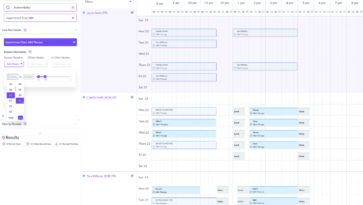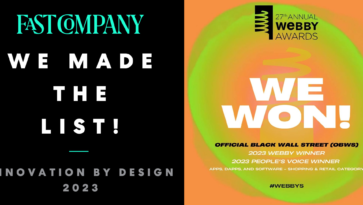
Web connectivity is becoming par for the course as more and more devices are designed as part of the internet of things. My team recently joined the ranks of IoT developers and designers when we built an app for a drone that takes selfies.
For companies wanting to build their own contributions, the danger is in losing sight of the “why.” At its heart, IoT exists to make aspects of the user experience easier and more seamless — not just adding connectivity for its own sake. By designing IoT systems with the user at the forefront instead of in the background, a company can truly reap the benefits of this rapidly emerging field.
Building IoT The Right Way
When designing ROVA’s app, our primary goal was to transcend the current drone customer base of tech-savvy enthusiasts who don’t mind a steep learning curve. We needed to reach the everyday user, not just the tech gurus. Our vision of success was this: a scenario in which someone could open a box, download the app and be able to fly and take photos in just a few minutes.
In order to make that a reality, we had to dive into what makes (or breaks) a successful IoT product.
Unsuccessful IoT development begins with the goal of creating an IoT product, and it can ultimately make the original problem it’s trying to solve more difficult. We knew that if we were to prioritize innovation for innovation’s sake over delivering something valuable to users, it would inevitably fail.
Successful IoT products, on the other hand, put the end user first. Delivering an app that’s easy to use required lots of research into the current drone market and even more user testing to meet our requirements. This lesson applies universally to IoT product development. A successful IoT system is intuitive above all, and it genuinely helps the user complete a task that would be more difficult without it.
While creating a user-friendly experience for a customer-facing IoT product, we knew that simplicity nearly always reigns supreme, but the device itself shouldn’t be held back. Consider Alexa or internet-connected thermostats: They require extensive back-end engineering, but from the customer’s perspective, they work like magic.Successful IoT systems don’t task users with learning a new interface, and they eliminate delays in feedback to create as seamless an experience as possible. We knew ROVA needed to be — to the users — a camera first and a drone second, and that we had to build an app that supported that.
Designing Products For Success
Companies looking to capitalize on the IoT by delivering great products can employ the following advice to succeed:
- Involve users early. Make sure you test the product with real people who are part of your target audience. Doing thorough, qualitative research is critical to pinpoint that audience and figure out what area of their lives you can improve. We knew that how our audience would actually interact with the product could have been entirely different than how we designed it to work, so we made sure to confirm any assumptions about our audience through tests. Testing with the ROVA demographic gave us insight into whether the demographic would use the product, and it allowed us to hear from members of the target audience what they thought a drone could do and what a drone shoulddo.
- Make users’ pain points your priority. Remember, you’re making something for your customers, not for your company. Instead of putting the device first, put in the time to figure out how your product can help its customers and then create the product that emerges from that research. In ROVA’s case, we aimed to solve two pain points: money and time. Usually, drones are niche, hobby items that require a lot of background knowledge and money to use. We aimed to make them accessible so users could take a drone right out of its box and use it with something they already own: a smartphone.
- Know going in that it isn’t simple for everyone. What’s simple to the end user often starts out as complicated for the designers and developers. We knew we couldn’t underestimate the complexity of producing, launching and supporting hardware-software products. Creating an IoT device for its own sake will inevitably end up being a waste of time and money, so go about the process the right way and understand the substantial investment that will be required before a device starts to show a return.
There’s no denying that IoT is huge, but it takes more than giving a mundane device connectivity to make it “smart.” Without taking the proper steps, IoT products won’t succeed — they’re impractical at best and idiotic at worst. Users need to come first for great IoT products. It’s only when you prioritize your audience and their problems (over fancy bells and whistles that don’t actually help the user) that your product will take off.







